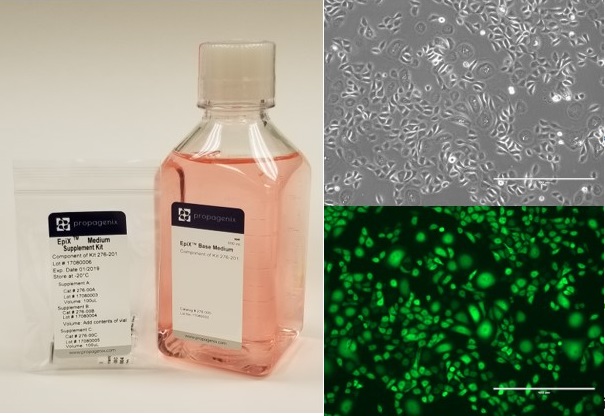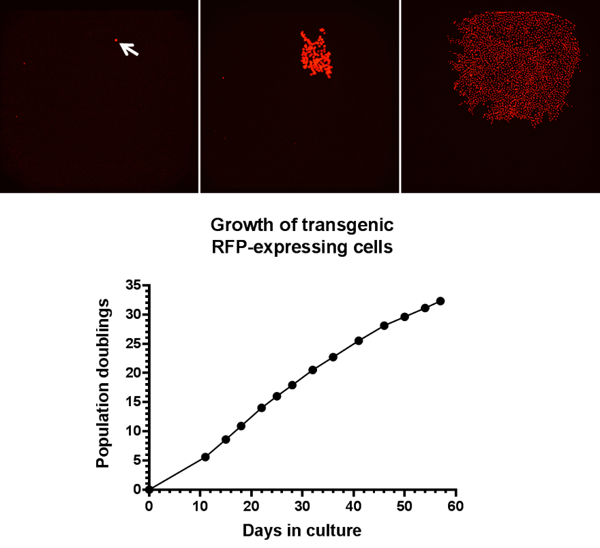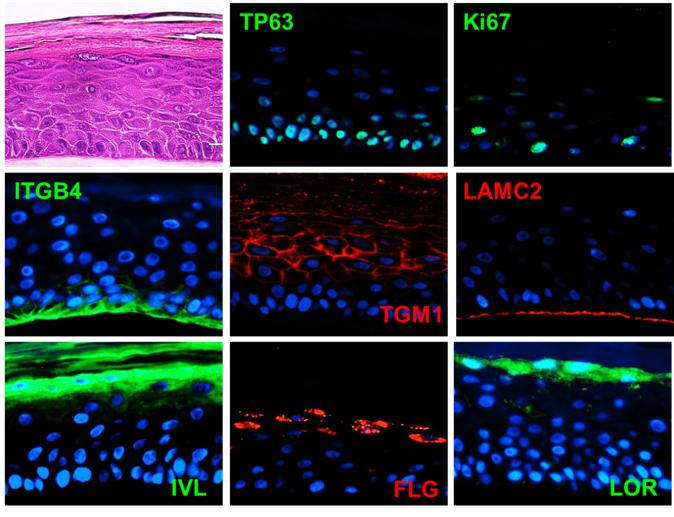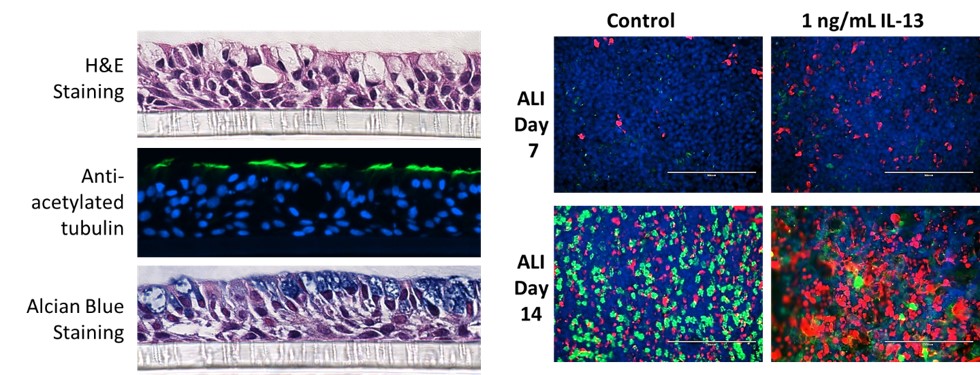EpiX Medium

(left) Overview of the EpiX technology. (right) Human foreskin keratinocyte cell line that express GFP from the AAVS1 locus (via CRISPR/Cas9 knock-in).
Overview
-
EpiX is a serum- and feeder- free epithelial cell culture media kit that supports the trillion-plus fold expansion of skin, airway, mammary and other epithelial cells. Media does not contain antibiotics.
Media does not contain antibiotics.
Catalog #
276-201
Unit of Measure
500mL bottle + supplement kit
Storage Conditions
Store medium at 2 - 8°C until needed and supplements at -20°C until needed
Thaw Conditions
Thaw supplements at room temperature
Stability
Once supplements are added to base medium, store the complete EpiX medium at 2 - 8°C and use within one month
Learn More
-
The EpiXTM medium is a feeder cell-free and serum-free cell culture medium that can achieve over one trillion-fold expansion of human epithelial stem and progenitor cells from skin, airway, mammary, and prostate glands in the absence of feeder cells. Transcriptomic and epigenomic studies show that this condition helps epithelial cells to overcome stresses for continuous proliferation. EpiX-expanded basal epithelial cells differentiate into mature epithelial cells consistent with their tissue origins. Whole-genome sequencing reveals that the cells retain remarkable genome integrity after extensive in vitro expansion without acquiring tumorigenicity. EpiX technology provides a solution to exploit the potential of tissue-resident epithelial stem and progenitor cells for regenerative medicine.

The EpiX medium supports trillion-fold in vitro expansion of epithelial cells from various tissues. Human foreskin keratinocytes, prostate epithelial cells, bronchial epithelial cells and mammary epithelial cells can be propagated in the EpiX medium for 40–70 population doublings, far beyond the 15-20 population doublings obtained in conventional serum free medium.

The EpiX medium enables genetic engineering in primary epithelial cells and single cell cloning. A stable cell line expressing H2B-RFP was derived by lentivirus transduction of human foreskin keratinocytes and used for single cell cloning in EpiX medium in 384-well plate. A single cell grew into a colony in 10 days and continued to expand for over 30 population doublings.
EpiX-expanded epithelial cells retain lineage-committed differentiation capacity and seamlessly integrate into conventional air-liquid-interface differentiation.

Human adult dermal keratinocytes (Passage 6) expanded with the EpiX medium differentiate into stratified epithelium at air-liquid interface. Paraffin section of the stratified epithelium was stained for various marker genes. TP63: basal cell marker; Ki67: cell proliferation marker; ITGB4: integrin β4; TGM1: transglutaminase 1; LAMC2: laminin γ2; IVL: involucrin; FLG: filaggrin; LOR: loricrin.

Human bronchial epithelial cells from a healthy donor that had been expanded in the EpiX™ medium for 30 PDs (Passage 8) readily differentiated into mucociliary epithelium under standard air-liquid interface (ALI) protocol. Treatment with IL-13 (1 ng/mL) resulted in goblet cell hyperplasia (stained with anti-MUC5AC in red) and suppression of multiciliated cells (stained with anti-acetylated-tubulin in green).
EpiX-expanded human bronchial epithelial cells (Passage 8) were differentiated into bronchospheres in Matrigel® for 21 days. This video showed spontaneous cilia beating of the multiciliated cells, which faced the lumen of the bronchospheres.

EpiX-expanded human bronchial epithelial cells (Passage 8) were used to make spheroids with their apical side facing outward. The cilia beating frequency (~ 9 Hz) is similar to what has been observed in vivo. (middle) H&E staining of the ASO epithelium spheroid revealed abundant multiciliated cells with their cilia facing outwards to the medium. (Right) Multiciliated cells were stained with an antibody to acetylated-tubulin in green color. Nuclei were stained with DAPI in blue.
Product Insert & Protocols
-
Air-Liquid Interface (ALI) Differentiation Protocol for Human Bronchial Epithelial Cells
References
-
Platform Effects on Regeneration by Pulmonary Basal Cells as Evaluated by Single-Cell RNA Sequencing. Greaney AM, Adams TS, Brickman Raredon MS, Gubbins E, Schupp JC, Engler AJ, Ghaedi M, Yuan Y, Kaminski N, Niklason LE. (2020) Cell Reports 30(12):4250–4265. DOI: 10.1016/j.celrep.2020.03.004
Applying EpiX™ Technology to Enable Ex Vivo Theratyping Using Nasal Airway Epithelial Cells Derived from Patients with Cystic Fibrosis. Zhang C., Shrivastava, A., Bihler H., Harrington J., Musisi I., Mense M., Randell SH., Bruehl MJ., Muhlebach MS., McQuiston TJ., Challberg SS. and Pollok BA. 2018 October, Presented at North American Cystic Fibrosis Conference, Denver, CO. Poster here.
